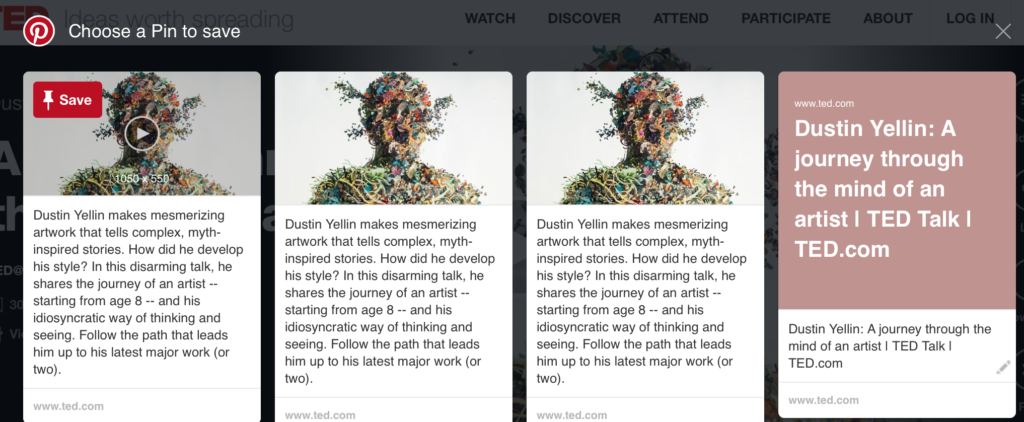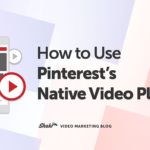Facebook focuses on idea sharing, Twitter is all about broadcasting your thoughts, Instagram prioritizes the visually interesting, and Pinterest provides storage for the content and products you love. Each social media site is designed to serve a different purpose, so we use it differently. It’s no surprise, then, that we’ll watch—and expect—different types of video on each platform.
In this post, we’re going to go over how to use video marketing on each individual social media site for best results, including ideal length, file size, and best practices.
Facebook Video Best Practices
Facebook video is more flexible than other types of social media video marketing; there aren’t time limits that would affect most businesses, and the diverse audience means that multiple types of content will perform well.
Facebook requires that all native videos be under 45 minutes long, and less than 1.75 GB. You should almost never get anywhere close to that 45 minutes. Instead, aiming for video lengths between two and four minutes long is ideal for Facebook. This allows for enough time for you to provide value without risking losing the viewer’s interest. In my personal experience, Facebook Ads should be kept to a minute and a half or less.
In general, Facebook users are most likely to share content that they find extremely emotionally engaging—regardless of the emotion. Whether the video makes us laugh, cry, or both, we like content that makes us feel something.
Tutorials are also extremely effective on the platform, and are frequently saved by users because they provide value. As a result, users save the videos to benefit from the knowledge later.
Other Facebook video best practices to consider include:
- Add captions to every video
- Add a link and a CTA to the end of every video, encouraging users to take action, even if it’s just to view your page
- Share Facebook videos natively, instead of uploading a link to YouTube; Facebook prioritizes native videos in the algorithm, while it gives significantly less priority to posts containing outside links
Twitter Video Best Practices
Twitter is all about brevity, so it makes sense that the time limit is a heck of a lot shorter than Facebook’s 45 minutes. Twitter requires that all videos be under two minutes and twenty seconds (which is up from its previous 30 second maximum). Videos also must be MP4s with AAC audio, and need to be 512MB or under.
Because Twitter is all about trending topics and breaking news, videos that are share brief snippets of valuable information can flourish on this platform. This includes videos of announcements about your business or product.
Jamie opening our #soletair plant. Thank you Jamie!#video #landofthecurious pic.twitter.com/6RNzZHFD6K
— LUT, Lappeenranta (@UniLUT) June 14, 2017
Videos about (or of) your event also perform well on Twitter. Encourage attendees to create their own videos and share them with the event’s hashtag.
#VIDEO Jack and Jack & @skatemaloley performing “Like That” tonight at their #GONE pop up show in Los Angeles! pic.twitter.com/zSuHvHVYDf
— Jack and Jack News (@AllThingsJacks) June 19, 2017
Some Twitter video best practices to keep in mind include:
- Always add at least one hashtag to expand the video’s reach
- Videos on Twitter perform best when they’re informative, but you should still make sure they’re conversational
- Place UGC within the video whenever possible
- Provide behind-the-scenes, “exclusive”-feeling content
#VIDEO | @JohnMayer via Instagram Story. pic.twitter.com/dz7C0bnKmT
— John Mayer Snaps (@johnmayersnaps) June 20, 2017
Instagram Videos Best Practices
You can use Instagram videos in two places: in stories, and in the app’s feed. Your video must be between 3 and 60 seconds long, though I highly recommend that stories are kept to 10 seconds or less—users want to scroll through these quickly, like Snapchat-styled content. The file size for Instagram videos must be kept under 1 GB.
A wide variety of video types work well on Instagram. This includes tutorials, emotion-evoking content, breaking news, and more. Videos that center user generated content (UGC) also perform exceedingly well on this platform, and should be used whenever possible.
Sharing brief snippets of a live event or information on upcoming news works incredibly well in the Story Format. Even boomerang videos (an example of which is pictured below) can be exceptionally efficient in stories.
Instagram video best practices to keep in mind include:
- Try out different video formats; when you use the in-app camera, you can shoot video in both vertical and landscape modes for in-feed posts (stories will only be vertical)
- Start with a stunning image. Because Instagram is such a visual-centric app, start your video with an image that grabs users attention quickly; talking heads might not do the trick here
- Use at least 11 hashtags in your description to increase engagement, views, and the visibility of the post
Pinterest Video Best Practices
The last time you were on Pinterest, did you see any videos? If your feed looked anything like mine, you didn’t see many. This is good news: Pinterest has a native video player, meaning that users can watch the video from the pin’s close-up, but not a lot of businesses are using it yet. If you do, it can be easier to stand out.
To create a video pin, you’ll need to have the video uploaded somewhere else online. Then, pin that page, and choose the video as the pin’s feature image.

Given Pinterest’s audience and core usage, it’s no surprise that DIY content and tutorials will be the highest performing content on the site. Make sure to mention what the tutorial is in the video’s description, and choose a video thumbnail that will represent it well.
Pinterest’s video best practices include:
- Use tons of keywords in the pin’s title and video description
- Use Promoted Video pins to increase video views and brand awareness
- Choose video thumbnails with one or two bright dominant colors, as pins with these colors perform best
Final Thoughts
Each social media platform offers a different user experience, so it only makes sense that users will have different responses to different kinds of videos on each. By understanding these differences—both in terms of platform requirements and user preference—you’ll be able to more successfully adapt your videos and your marketing campaigns to each site, increasing your results along the way.
What do you think? How do you adapt your videos for each platform? Which platform do you prefer most? Leave us a comment and let us know what you think!


